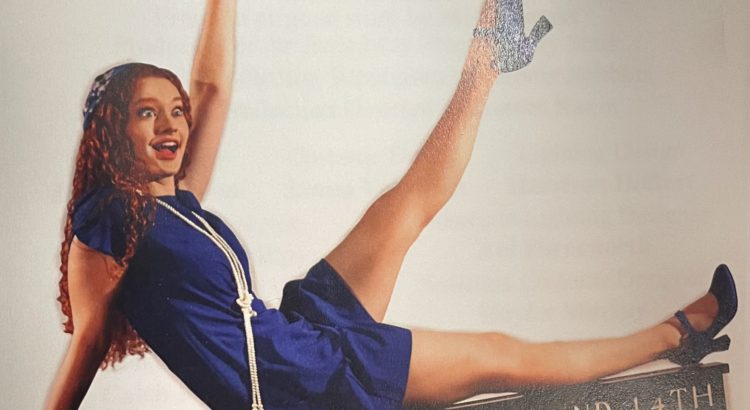SMTD’s Sweet Charity is an ambitious attempt to restore a musical of its time. It features a lighthearted, happy-go-lucky dancer and the ups and downs of her romantic life– ultimately culminating in a promising but mildly problematic love interest. The show was entertaining and certainly worth the watch, and SMTD’s performers once again outdid themselves with their beautiful and engaging performances in singing, dancing, and acting; however, I think the musical itself was an overall unsatisfying with its meandering plot and sub-par music. It seemed too sympathetic of past conventions of gender roles and expectations to really land on meaningful social commentary, and missed the mark of nostalgic storytelling.
The show opens up with a song about Charity (later dubbed “Sweet Charity” by her problematic future lover) and her first lover, who turns out to be a sleazy “gentleman.” She dumps him while talking with her friends at the dance club, where she works as a dancer. Most of the first act is the wandering, slightly whimsical adventures of Charity’s fruitless romances and sex life, until– at last– she lands on a good, reliable, suit-wearing, morally trustworthy man: Oscar Lindquist. He seems to suffer extreme anxiety, but this doesn’t bother Charity. The main problem, however, is that Charity works as a taxi dancer in a dance hall– a job she knows Oscar wouldn’t approve of. She lies to him, letting him believe that she’s a banker.
Perhaps I’ve become too familiar with feminist ideas and have reflexive knee-jerk reactions when anything even slightly sketchy appears, but Oscar is the re-incarnated version of every single problematic nice guy. When Charity and him are on a date, he holds her hands on a ferris wheel, the stage ceiling glittering with stars, and says (paraphrasing), “Charity, Sweet Charity, you have what no other woman has these days– and that is pure virginity.” I had to stifle a gasp of outrage. The guy next to me cursed loudly under his breath.
Eventually, Charity confesses that she’s a dancer at the Fandango ballroom, through tears, refusing to look at Oscar’s eyes, and he proposes to her anyway, promising her that her profession and her past mean nothing to their future. Yet, a day before their wedding, Oscar leaves her last minute, admitting that every time he thinks about her, he can’t help but imagine all the men she’s slept with, all the men that have paid her to dance with them. By the end of the musical, however, he returns to her, declares his everlasting love, and they are, yet again, engaged.
The plot is certainly intriguing, and gives a glimpse into the degradation of sexually expressive women and the limited options of lower-class women in general. However, the first act of the musical, though entertaining, was largely insubstantial to the main ideas of the musical and its later characters. The musical also ends on a note that seemed totally inconclusive– I wanted to see if Charity’s marriage with Oscar actually ended up working, or if she suffered the consequences of living with man who had very specific and conservative qualifications for a “good” woman and wife– but we never end up seeing that.
There there many themes that would have been interesting to explore more that never saw out their full arc in the musical– we see threads of working women’s entrapment in the dance hall, Charity and her friends fighting for respect in the field they work in, and the line between romance, love, and desperation– but all these are just faint thematic shadows of an unactualized musical. Perhaps if the songs had been more robust and engaging, these themes could have been more actualized, but many of them were disengaging and meaningless. Though the performances were perhaps the strongest part of the musical, I can’t say it made the characters, plot, or songs any more likeable.
Despite my opinion of the musical, I will say that it was certainly worth the watch and entertaining enough to keep me invested in the story, and understanding it as a musical of its time makes a great deal more tolerable. The performers were riveting– I will never stop being wholly amazed at the sheer talent of SMTD students at Michigan. I can’t wait to see the next musical SMTD puts on next– but I sincerely hope it isn’t one about the romantic ups and downs of one particular dancer in the 60’s.














